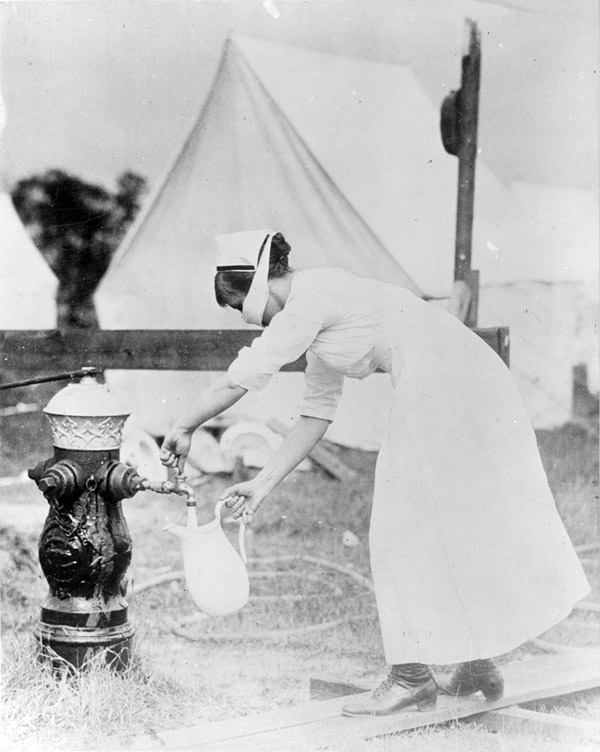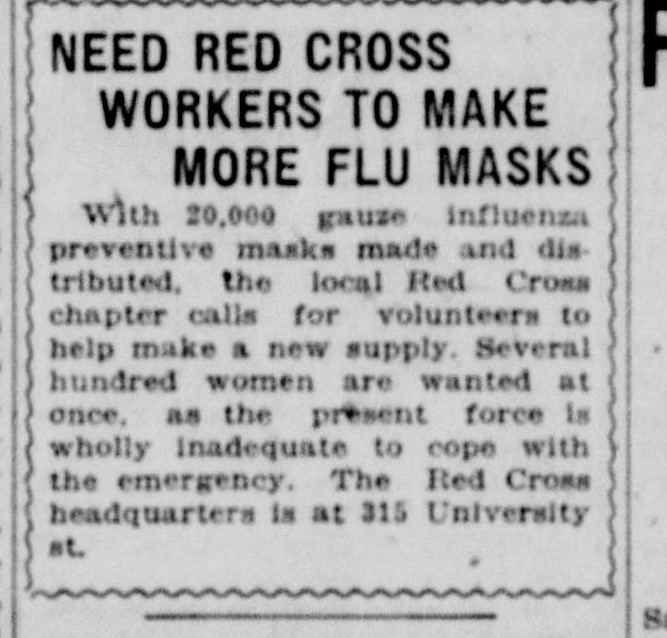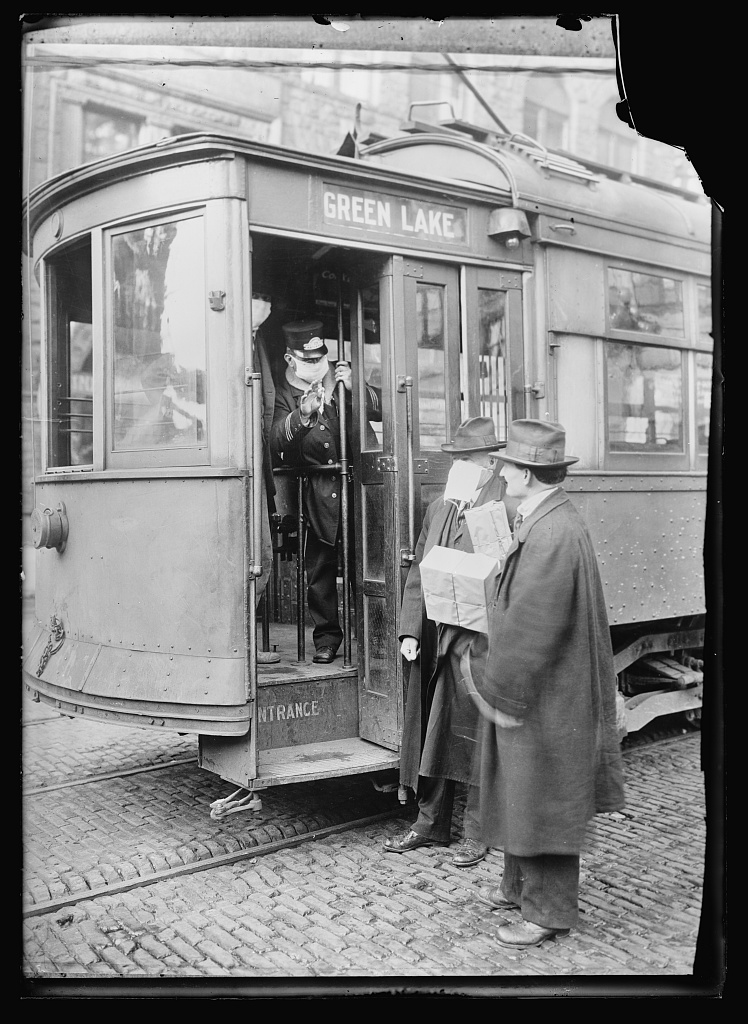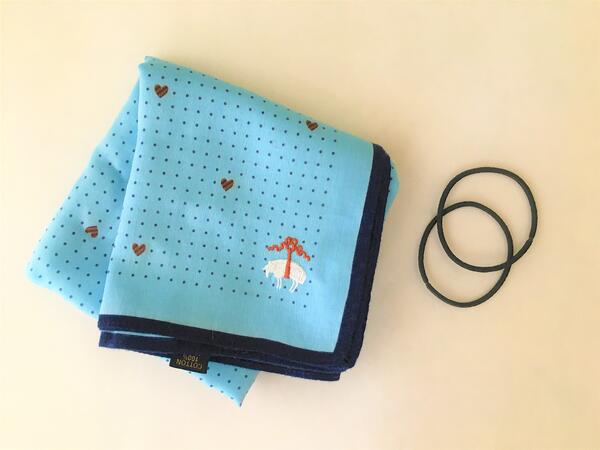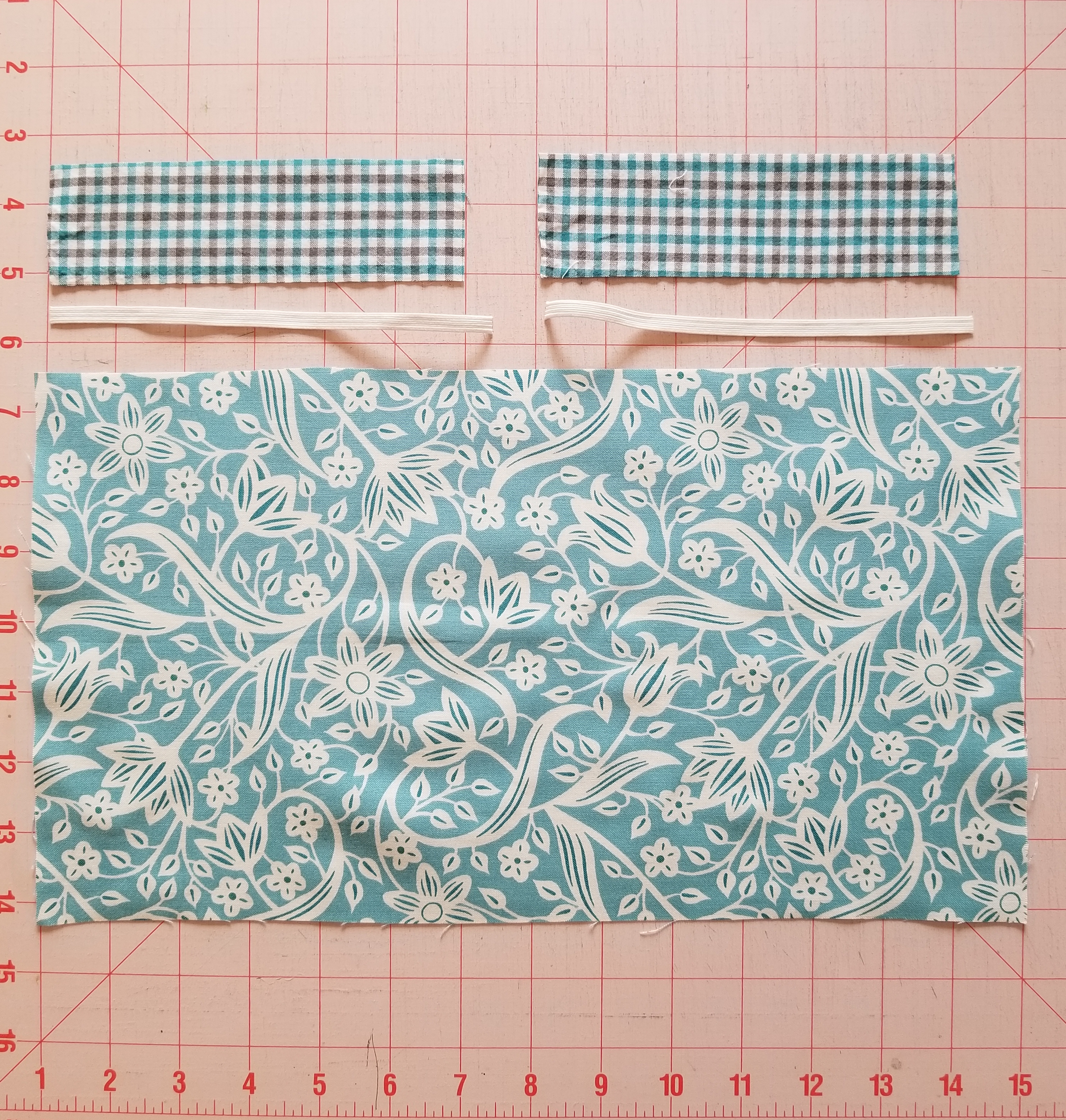1918 Influenza pandemic
Directions for making Gauze Face Masks
Use as fine gauze or cheesecloth as possible. Fold material to make five thickness and cut an oblong 3-1/2 x 7-1/2 inches. Make three half-inch plaits at each end, turn in edges and stitch. Cut four feet of tape into four lengths and sew one to each corner. Make box plait 1-1/2 inches in width in one of the long edges of the mask, stitch down one inch. To adjust, place mask over face: tie tapes from upper corner around back of head and tape from lower corners around back of neck. Place box plait over nose. Masks should be worn by attendants whenever caring for those sick with influenza or pneumonia.Gloucester Daily Times 9/30/1918 Flu masks / Face masks
They should be changed at two-hour intervals and oftener if wet, and immediately boiled for five minutes, (illegible), or wrapped securely in paper bag or newspaper until they can be boiled
Gloucester, Mass.
“The work of the nursing service has been one of the demonstrations which, in a way, can be measured. When it is realized that in response to the advertised and personal requests for volunteer service over 200 responses were received, and that the hours of service were long and the work strenuous, I think everyone must agree that no words can express proper appreciation of the ladies who have given their time and strength to nurse their sick townspeople. To ask a woman to leave her home at 3 o’clock in the morning and have her cheerfully comply shows the material of which the women of your city are made…Classed with nursing service has been a specialized group which has been properly called the Mask Factory. As influenza is a respiratory disease, transmitted almost entirely by close contact with secretions of the nose and mouth from coughing, sneezing and spitting, the protection of the workers depended upon an ample supply of masks. The mask factory worked 24 hours a day until there was an ample supply, and then with the usual enthusiasm of all workers, demanded an additional duty to perform. All such demands were readily granted and in this particular instance warm wraps and bed slippers (for the patients) were made the additional duty.”
Major Alec Thomson, Some Good News about Gloucester, Mass. October 11, 1918
Read more about the Gloucester flu battle during the 1918 Pandemic here, an online resource including day by day archives.
Across the country, Seattle Washington pushed to replenish their stockpile
Lost socks? 2020 Covid-19 easy sock mask version we tried at home
